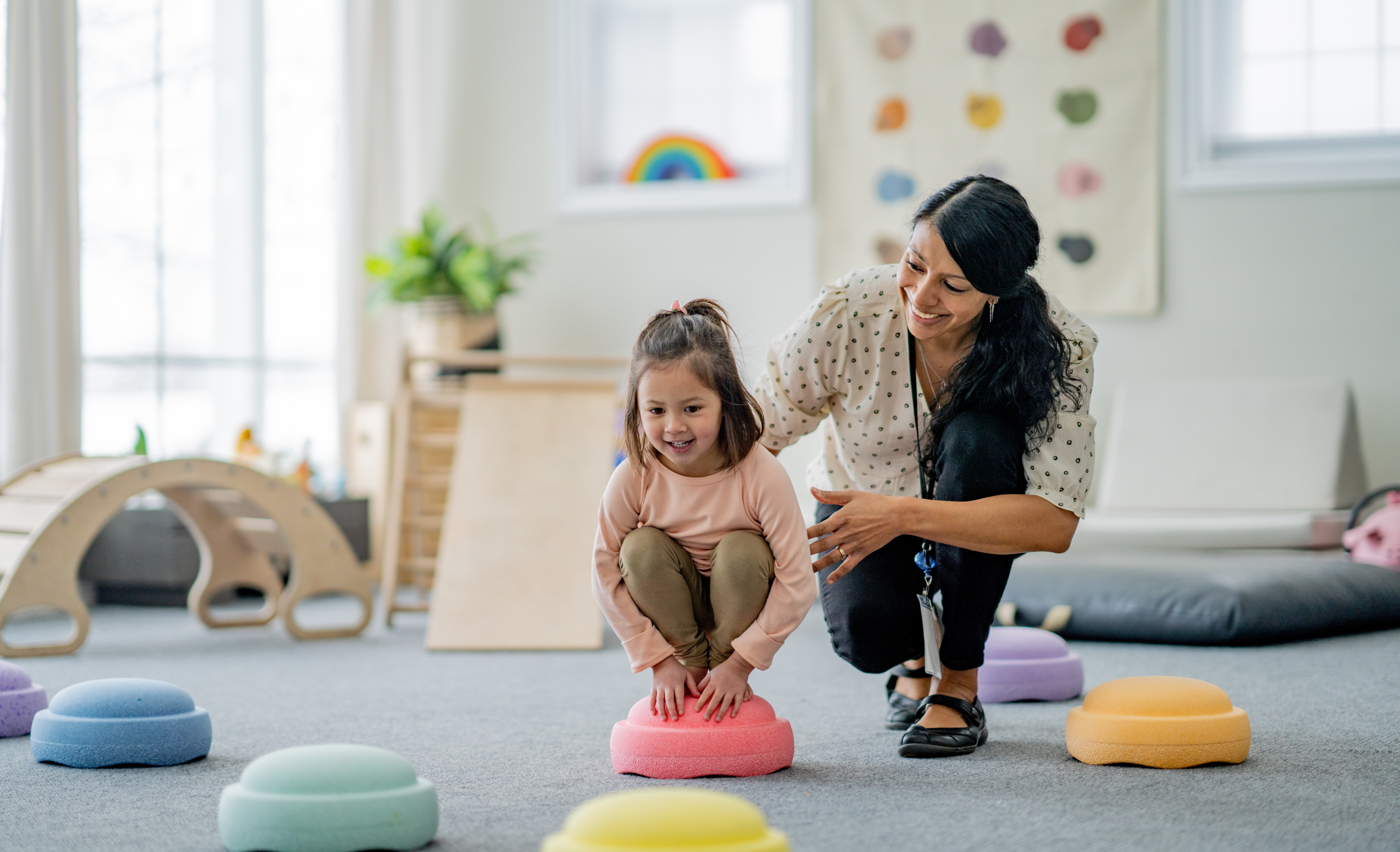Occupational Therapy

Pediatric Occupational Therapy helps a child develop the skills that are needed to take part in their lives to the best of their abilities. For most children this includes learning, play and socializing, writing, participation in motor skills, and self care (dressing, feeding, and toileting). Many children can struggle with the ability to regulate both their bodies and emotions which will impact all of these skills. In order for a child to take part in these situations, they require:
- Concentration so they can learn and complete the activity
- The motor and perceptual skills so they can control and coordinate themselves
- Regulation of their emotions to maintain calm and focus so they can learn
Occupational Therapists help children with a variety of challenges, including developmental delays, sensory processing disorders, learning differences, motor coordination disorders, and visual spatial deficits.
- Occupational therapy is a form of play based therapy. This means that children will be engaged in activities that they find fun and enjoyable.
- In addition to our play-based approach, our occupational therapists also provide a form of direct intervention to integrate their primitive motor reflexes.
- Occupational therapy is a collaborative process. The occupational therapist will work with a child, the parents, and other caregivers to develop a treatment plan that meets the child’s individual needs.
How We Can Help
Sensory Integration: Techniques to support the processing of sensory input from internal stimuli as well as from their environment, such as touch, movement, auditory, and visual input. Children with challenges in this area can be either ores, responsive or unresponsive to sensation and may be seen as over-active and impulsive or very quiet and withdrawn.
- Reflex Integration: techniques to support primitive movement patterns needed for development of a child’s motor system, visual and auditory processing, and higher level skills needed for learning.
- Gross Motor Coordination including muscle control and coordination to engage in physical activities, including running, walking, jumping, climbing, and sequencing sports skills.
- Fine motor coordination including muscle control for manipulating small objects, managing fasteners, grasping and controlling the pencil, and handwriting.
- Visual perceptual skills, including ocular motor functioning for visual fixation and scanning needed for reading and writing, And processing visual information and connecting it with something meaningful. Visual perception is a crucial skill for learning to read, copy from the board or book, developing good hand, eye coordination, and organizing a child’s body in space.
- Attention and concentration skills needed for learning and task completion
- Daily Life skills development including dressing, hygiene, sleeping, and eating.
- Learning, including the executive function skills needed for planning and anticipation, problem-solving, organizational skills, and perseverance for task completion.
- Social and Emotional techniques, including emotional and social language and awareness, coping tools for regulation, and social perception.
- Eating and feeding therapy
- Play Activities: plays an important part of childhood development and language. We use the DIR floortime method as well as a child guided/centered approach to develop the skills for play.

The Mind Body Child Advantage
Our team works with a strong value system, meeting children where they are, and placing them at the center of our focus. We collaborate with all individuals who are a part of their team to ensure the most effective and successful outcome. Remember it is one whole brain, and we need to treat the WHOLE CHILD!
